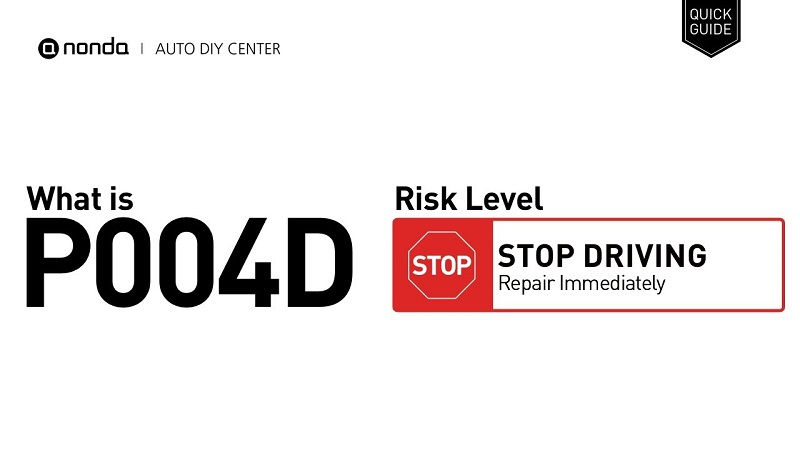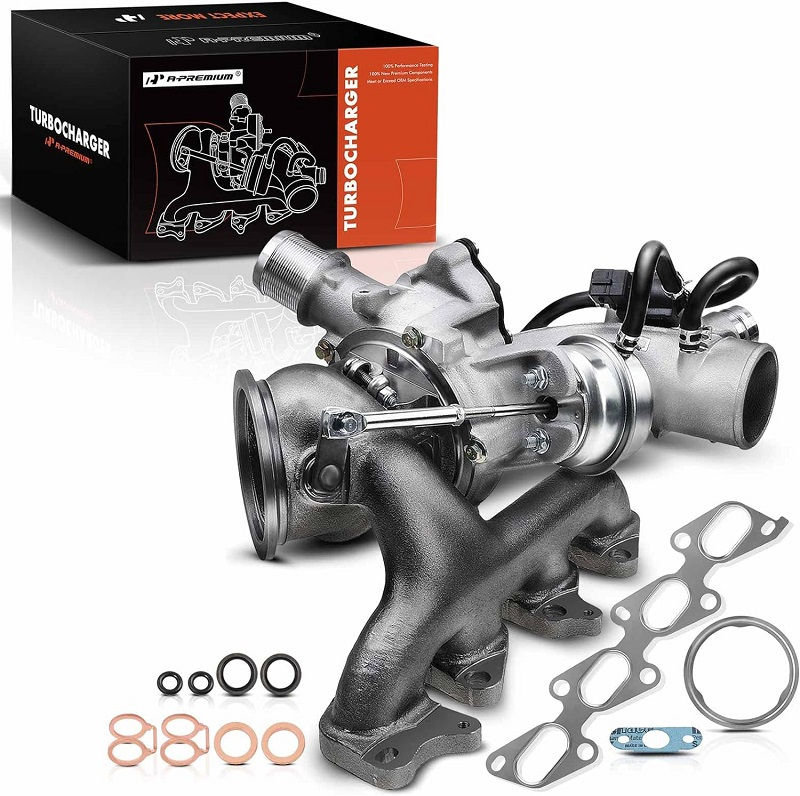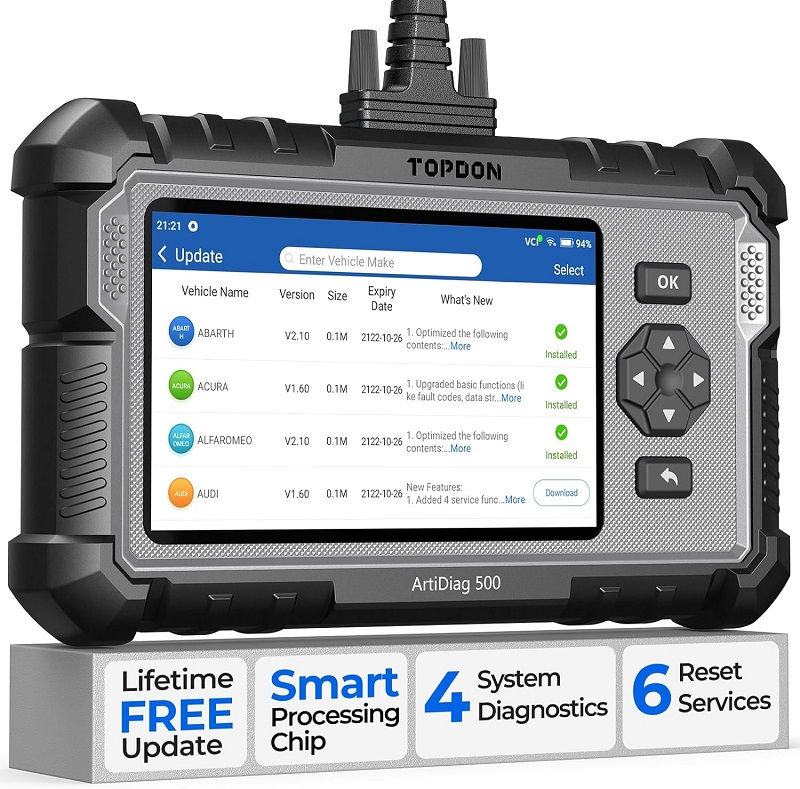This post contains affiliate links. This means I will make a commission at no extra cost to you should you click through and make a purchase [ “As an Amazon Associate, I earn from qualifying purchases.” ]. Read the full disclosure here.
Understanding P004D Turbocharger/Supercharger Boost Control “B” Circuit High GuideMechanic.Com In the realm of automotive diagnostics, deciphering cryptic error codes can be akin to decoding a puzzle.
Among the myriad of diagnostic trouble codes (DTCs) that can perplex even seasoned mechanics, P004D stands out as a common yet intricate challenge.
This enigmatic code, denoting Turbocharger/Supercharger Boost Control “B” Circuit High, often leaves car owners scratching their heads while mechanics embark on a journey to unravel its complexities.
See Also: P004B Turbocharger/Supercharger Boost Control “B” Circuit Range/Performance
P004D Turbocharger/Supercharger Boost Control “B” Circuit High
Decoding P004D: What Does It Mean?

P004D is a diagnostic trouble code that specifically pertains to issues with the Turbocharger or Supercharger Boost Control “B” circuit.
In essence, it signifies that the engine control module (ECM) has detected an abnormality in the electrical circuit responsible for regulating the boost pressure within the forced induction system of the vehicle. This anomaly typically manifests as a high voltage condition within the Boost Control “B” circuit.
Understanding Turbocharger and Supercharger Boost Control
To comprehend P004D fully, it’s essential to grasp the fundamental principles behind turbochargers and superchargers. These devices belong to a category known as forced induction systems, designed to enhance engine performance by compressing air and forcing it into the combustion chamber.
Turbochargers utilize exhaust gases to drive a turbine connected to a compressor. As the turbine spins, it forces air into the engine, resulting in increased power output.
On the other hand, superchargers achieve similar results through a different mechanism, typically employing a belt-driven compressor to pressurize the intake air.
Boost control plays a pivotal role in optimizing engine performance by regulating the amount of air delivered to the engine.
The ECM employs various sensors to monitor parameters such as engine load, throttle position, and airflow, using this information to adjust boost pressure accordingly.
P004D Turbocharger/Supercharger Boost Control “B” Circuit High
Common Causes of P004D

Unraveling the mystery of P004D requires a systematic approach to identify potential culprits lurking within the Boost Control “B” circuit. Some common causes include:
Faulty Boost Control Solenoid:
The Boost Control Solenoid is responsible for modulating the boost pressure by regulating the flow of pressurized air. A malfunctioning solenoid can disrupt this process, leading to erratic boost control and triggering the P004D code.
Broken or Damaged Wiring:
Frayed, corroded, or broken wires within the Boost Control “B” circuit can impede the flow of electrical signals, resulting in a high voltage condition detected by the ECM.
Poor Electrical Connections:
Loose or corroded electrical connectors can introduce resistance into the circuit, compromising the integrity of the Boost Control “B” system and triggering the P004D code.
Defective ECM:
While less common, a malfunctioning ECM can erroneously detect a high voltage condition within the Boost Control “B” circuit, triggering the P004D code even when no actual fault exists.
P004D Turbocharger/Supercharger Boost Control “B” Circuit High
Diagnosing and Resolving P004D

Effectively diagnosing and resolving P004D requires a methodical approach and a keen understanding of automotive diagnostics. Here’s a step-by-step guide to tackling this elusive DTC:
Scan for Additional Codes:
Begin by conducting a comprehensive diagnostic scan to check for any additional codes that may provide valuable insights into related issues affecting the Boost Control “B” circuit.
Inspect Boost Control Solenoid:
Verify the functionality of the Boost Control Solenoid by conducting a visual inspection for signs of damage or corrosion. Additionally, perform a bench test to assess its operation and ensure proper functioning.
Check Wiring and Connectors:
Thoroughly inspect the wiring harness and connectors associated with the Boost Control “B” circuit, paying close attention to any signs of wear, damage, or poor connections. Repair or replace any compromised components as necessary.
Test Voltage and Continuity:
Utilize a multimeter to measure voltage and continuity along the Boost Control “B” circuit, verifying that electrical signals are flowing unhindered and within the specified parameters outlined in the vehicle’s service manual.
Verify ECM Functionality:
While rare, consider the possibility of a defective ECM contributing to the P004D code. Perform a comprehensive diagnostic evaluation of the ECM to rule out any underlying issues affecting its operation.
Clear Codes and Test Drive:
Once the root cause of the P004D code has been identified and addressed, clear the DTC from the ECM’s memory using a diagnostic scan tool. Proceed to test drive the vehicle to ensure that the issue has been successfully resolved and that no further codes are present.
Conclusion
See Also: P004C Turbocharger/Supercharger Boost Control “B” Circuit Low
In the intricate world of automotive diagnostics, unraveling the mysteries of cryptic error codes like P004D requires patience, expertise, and a systematic approach.
By understanding the underlying principles of turbocharger and supercharger boost control systems and diligently diagnosing potential causes, mechanics can effectively address the issues triggering this elusive DTC.
Whether it’s a faulty boost control solenoid, damaged wiring, or a malfunctioning ECM, resolving P004D Turbocharger/Supercharger Boost Control “B” Circuit High necessitates a comprehensive understanding of the vehicle’s systems and a commitment to meticulous troubleshooting.
With the right tools, knowledge, and expertise, overcoming this diagnostic challenge becomes an achievable feat, restoring both performance and peace of mind to vehicle owners worldwide.
- Catalytic Converter Cleaner Nearby - April 25, 2025
- BMW Catalytic Converter Price: What You Need to Know - April 24, 2025
- Scrap Catalytic Converter Price - April 24, 2025
